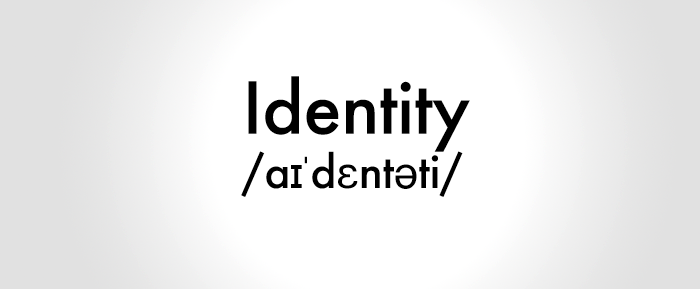Read this article on Medium
Identity is a multidisciplinary concept. The following excerpt from Survey of Self-Sovereign Identity Ecosystem defines Identity and Digital Identity as:

3.1. Identity
Identity has a long story. Possessing an identity has been of importance from the early times [13]. Depending on the context, the term identity is defined differently [14]. The American Heritage Dictionary defines identity as “The set of characteristics by which a person or thing is definitively recognizable or known,” and “The fact or condition of being the same as something else.” [15].
The word identity originated from the Middle French “identité”, which is derived from Late Latin “identitat-, identitas,” from Latin “identidem,” which is a contraction of “idem et idem,” meaning “same and same” [16].
Although the phrase “identity” is commonly used in everyday discourse and various contexts, it is proven rather difficult to provide an adequate and concise explanation to encompass its every meaning [17].
The French philosopher Paul Ricoeur defines identity as two-fold. The first is known as Idem which means sameness in Latin [18], and the second aspect is defined as Ipse meaning selfhood in Latin [18]. The sameness feature represents the characteristics that remain unchanged, and the selfhood aspect represents the features that are unique. From that definition, identity can be defined as the representation of an entity through features that make the entity unique and/or persist through time, in a given context. The term entity is defined as a logical or physical object with a separate distinctive existence either in a logical or physical sense [19].
In psychology, the term is generally referred to all the psychological traits of a person, including beliefs, personality, and other attributes [20]. While in sociology, the concept of identity includes the history, culture, religion, and traditions associated with the person [21].
The modern definition of identity as we know it was first used in 1950 by Erik Erikson and has been used in various contexts and purposes [22]. Glässer and Vajihollahi define identity as a logical representation of a physical presence of a person or thing [23]. Wang and Filippi define identity as all attributes of a person that uniquely defines the person over the course of a lifetime, providing sameness and continuity despite varying aspects and conditions [24].
In the book “Identity is the New Money” [25], David Birch projected the next evolution of identity to be defined by our social graphs, which take the model back to a digitized version of the preindustrial approach. The social graph is a digital representation of our truthful relationships.
3.2. Digital Identity
A digital identity is the unique representation of an entity within a particular digital context.
The National Institute of Standards and Technology (NIST) [26] defines digital identity as “the unique representation of a subject engaged in an online transaction. A digital identity is always unique in the context of a digital service but does not necessarily need to uniquely identify the subject in all contexts. In other words, accessing a digital service may not mean that the subject’s real-life identity is known.” The International Telecommunication Union (ITU) [27] defines digital identity as “A digital representation of the information known about a specific individual, group, or organization.”
Cameron defines digital identity as “a set of claims made by one digital subject about itself or another digital subject” [28]. He also introduces the Seven Laws of Identity. These laws are as follows:(1)Users should be in control of how their identity information is shared(2)The amount of information disclosed should only be the minimum necessary amount required, and data should not be kept longer than needed by the other entities(3)The user should be well informed about which entities manage their identity information(4)The user’s information should not be created or exposed in such a way to allow data correlation, pattern recognition, or entity identification by unauthorized entities(5)Interoperability and seamless integration among various entities supported by different architecture should be possible(6)Reliable and secure integration between human users and machines should be empowered(7)Consistent user experience across multiple contexts and technologies
A partial identity or persona is a subset of identity attributes associated with an entity in a particular context [29]. For every entity, there can be multiple partial identities. Digital identities are not necessarily the same as real-world identities since the digital identities represented online may differ from the characteristics represented in the physical world…
You can read the rest of the journal here.
